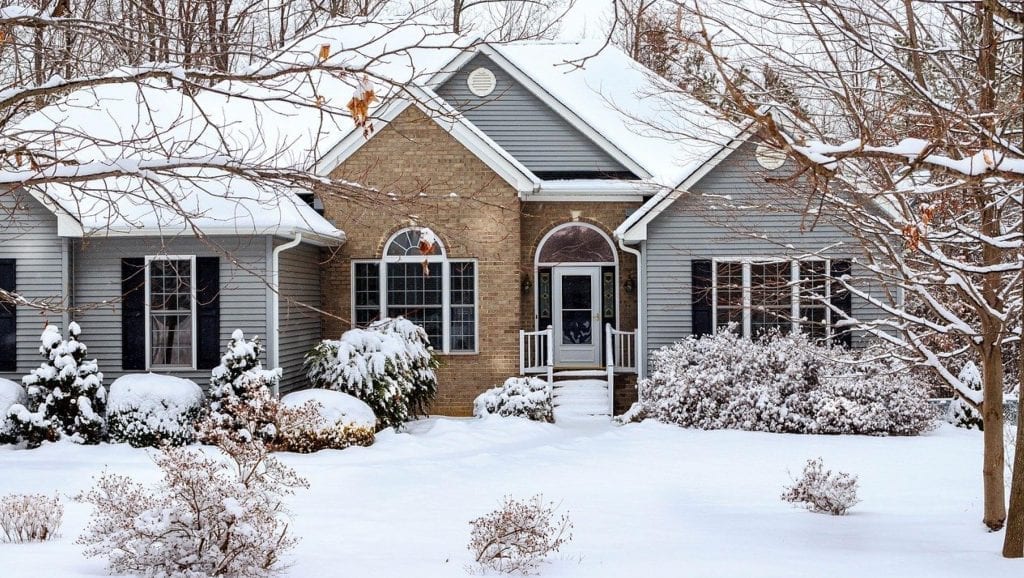A GUIDE TO PREPARING YOUR HOME FOR WINTER


Winterizing your home can save you hundreds of dollars on energy bills and keep you warm and cozy through the coldest nights. Most of the items on our list are inexpensive and easy to do yourself—many homeowners take a weekend out of each year to prepare for winter. Those living in milder climates may only need a day or even a few hours, but any preparation is better than no preparation.
Trim any limbs that are overhanging the house or driveway, especially if they are dead or dying. Snow and ice weigh down tree limbs, causing them to break and fall.
Clean the gutters and remove any debris that has accumulated on the roof. This prevents the formation of dangerous ice dams and icicles.
Also check downspouts and splash guards to make sure that your gutters move water away from your foundation. Water at your foundation is particularly damaging in the winter, when it can enter small cracks and freeze, widening and deepening those cracks.
Flush or drain your water heater to remove sediment buildup. Both tankless and standard water heaters benefit from this. Removing sediment improves the energy efficiency of the unit and extends its life.
If you have a standard water heater in the garage or other uninsulated space, you may want to use an insulating wrap on the water heater. This Youtube video from the Sierra Club shows you how.
Switch the rotation of your ceiling fans so that they rotate clockwise, pushing hot air towards the floor. Most fans have a switch on the base for just this purpose.
Windows are one of the least insulated areas in your homes exterior, so a little bit of effort here goes a long way towards a warmer home. First, seal any drafty areas with weatherstripping or weatherstrip tape. Some homeowners use caulk if they don’t plan on opening the window any time soon.
Insulation film may not look cute and cozy, but according to Bob Vila, it can reduce heat loss in the window area by up to 70%. Instead of film, some people use blackout curtains or even bubble wrap to keep heat inside.
If your home has old, single-paned windows, consider installing new double-paned windows that will better insulate your home. If replacing the current windows won’t work, installing storm windows and doors can reduce your home’s energy bill by up to 45% during the winter months.
Use weatherstripping and door sweeps to keep cold air from entering through doorways. Consider installing storm doors to increase energy efficiency.
Fall is a good time to have your furnace inspected by an HVAC technician. They can assess the health of the system and keep it running smoothly. If your ducts need cleaning or repair, technicians can take care of those issues as well.
Make sure to change the filter in your HVAC system before it gets too cold. A furnace with a dirty filter is not as efficient and can develop problems.
If you plan on using your chimney through the winter months, have it inspected and cleaned by a chimney sweep, who will remove dangerous Creosote deposits and any bird nests that are in the flue.
If you don’t intend to use your chimney, make sure the damper is in a closed position. If your chimney does not have a damper, a chimney balloon can seal the chimney and dramatically increase your home’s energy efficiency.
The water heater, furnace, and other gas-powered appliances that run constantly throughout the winter create an increased risk of carbon monoxide entering your home. Carbon monoxide can be deadly, so think of a detector as an inexpensive lifesaver. Install them low to the ground—carbon monoxide is heavier than air—and put them in any room where one of these appliances is present. Home fires are more likely in the winter, so make sure you have enough smoke detectors for safety.
If you already have smoke and carbon monoxide detectors, it’s a good idea to install fresh batteries before the winter season.
Insulate any pipes that may be in danger of freezing. Most hardware stores sell inexpensive pre-slit foam insulation that can be fitted over pipes and tape in place.
Outdoor faucets or spigots, also called hose bibs, should be turned off with hoses removed. They are easy to insulate: hardware stores carry spigot covers for a few dollars each, and plenty of DIY options can be found online.
Your insulation in the attic may not be as efficient as it could be, especially if you have an older home. The Department of Energy recommends a minimum of 12 inches of insulation. If you are adding new insulation to existing insulation, use paperless insulation as the paper creates a moisture barrier than can cause problems down the road.
Besides repairing and winterizing your home, stock up on any winter supplies you may need, like snow shovels, driveway salt, candles, hand warmers, and cold weather gear. If a serious storm hits and the power goes out, local shops will either close or face a rush of shoppers looking for these supplies. Planning ahead can turn a snowbound day into a mini-vacation.

Coverage not available in CA, WA and HI